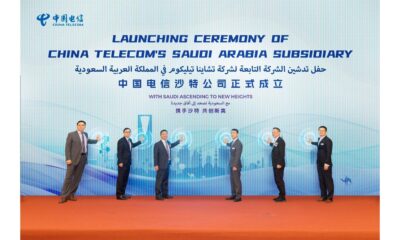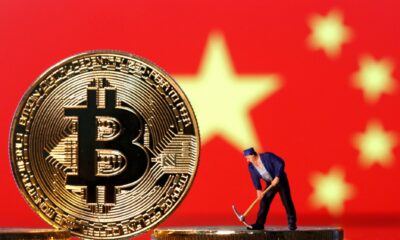Trade
Kishida’s diplomacy pushes back on seikei bunri

Author: Stephen Nagy, International Christian University, Tokyo
Deep economic cooperation in the areas of manufacturing, technology and finance has coexisted awkwardly with decades-long political and territorial disputes between Japan and China. This has led Japan to develop economic relations with China through a policy that separates politics and economics or seikei bunri.
Amid intensifying US–China strategic competition, China’s track record of economic coercion and its long-term objectives to secure its own ‘core interests’, Japan has become more concerned about its economic reliance on China.
The seikei bunri principles for engaging with China economically are giving way to Japanese Prime Minister Fumio Kishida’s new ‘economic realist’ diplomacy. Policy approaches to address concerns about the impact of politics on Japan’s economic security include selective diversification of supply chains away from China, reshoring, friend-shoring and national technological development.
The drift away from seikei bunri has raised concerns in Tokyo about Japan’s vulnerability to economic coercion and the weaponisation of supply chains.
Political leaders in Japan have already committed significant strategic and financial resources to enhancing economic security through selectively diversifying supply chains and reducing reliance on China. Initiatives include the adoption of supplementary budgets for economic security, such as securing domestic production bases for advanced semiconductors. Supplementary budgets have focused on promoting domestic investment to support supply chains and encourage their diversification.
Despite the political and security complexities, the mutually dependent economic relationship remains largely intact, is deepening and highly complementary. There is no replacing China as Japan’s major market for goods and services. Japanese companies have invested heavily in China, particularly in the automobile, electronics and machinery sectors. China is also a major source of low-cost goods and components for Japanese companies. This role has kept prices low and enhanced the competitiveness of Japanese products in global markets.
To decouple the Japan–China economic relationship would require untangling the complex and multifaceted mutual dependency that defines it.
After taking office in October 2021, Kishida positioned economic security as a major focus of his administration based on assessment of the challenges associated with China’s rise. In the wake of Russia’s invasion of Ukraine — with its impact on downstream energy and food security — Kishida warned that ‘East Asia could be the next Ukraine’.
Tokyo is promoting reshoring, urging Japanese businesses to migrate their production back to Japan from China or to explore new production bases in Southeast Asia, India and other countries. The government has introduced policies to support companies that are considering reshoring, including subsidies, tax breaks and regulatory reforms.
Tokyo has also highlighted the importance of diversifying supply chains, particularly for key components and materials such as rare earth metals. The Japanese government has been investing in alternative sources of rare earth metals, such as recycling and developing new mines in other countries. Japan is also exploring the use of new materials that can replace rare earth metals.
Tokyo has encouraged collaboration to enhance economic ties and agendas under the umbrella of the ‘Free and Open Indo-Pacific’. The G7 Foreign Ministers’ statement on 18 April 2023 — which stressed that ‘resilient supply chains should be built in a transparent, diversified, secure, sustainable, trustworthy and reliable manner’ — exemplifies this.
Japan has also emphasised the importance of strengthening domestic industries. This includes the development of new industries and technologies expected to decrease Japanese vulnerability to China and deepen its economic security.
A critical component for Japanese businesses is semiconductor materials. Despite being a major producer of semiconductors, Japan continues to rely on imports of key materials from other countries, including China. To mitigate this vulnerability, Tokyo has directly courted the Taiwan Semiconductor Manufacturing Company, among others, to relocate to Japan. It has also been investing in the development of next-generation semiconductors and encouraging its companies to move up the value chain to reduce their dependence on imports.
China continues to enjoy a monopoly over rare earth…
Trade
Self-Reliance and Openness: Core Principles of China’s Third Plenary Session

The Third Plenum communique from the CCP indicates a prioritization of stability and compromise in response to China’s economic challenges. It highlights the concept of Chinese-style modernization and establishes political guidelines for balancing regulation and market forces.
The CCP’s Third Plenum communique signals a focus on stability and compromise in the face of China’s economic challenges. It emphasises Chinese-style modernisation and sets political directions for balancing regulation and market forces. While not as groundbreaking as previous plenums, it acknowledges the importance of market mechanisms and technological self-reliance, aiming to address issues like high youth unemployment and private sector uncertainty. The communique seeks to navigate the complexities of global competition and domestic innovation, potentially reshaping global supply chains and trade dynamics. Overall, it presents a pragmatic blueprint for China’s economic future.
Source : Self-reliance and openness central pillars of China’s Third Plenum | East Asia Forum
Trade
Trade Prevails Over Political Persuasions in China-Germany Relations

China and Germany maintain a strong bilateral relationship, rooted in economic cooperation despite ideological differences. Recent visits and agreements focus on expanding trade and addressing mutual concerns, navigating challenges while nurturing ties.
Evolving Bilateral Ties
China and Germany share a strong bilateral relationship, rooted in history since 1972. This connection has seen moments of cooperation intertwined with periods of tension. German Chancellor Olaf Scholz’s April 2024 visit underscores Germany’s commitment to fostering this partnership, reflecting a mutual interest in maintaining economic ties despite ideological differences.
Economic Pragmatism
As the second and third largest global economies, China and Germany’s economic interdependence is crucial. Germany emerged as China’s primary trading partner in 2023, with trade values reaching €254.4 billion (US$280 billion). In response to global scrutiny, Germany has taken a balanced approach, emphasizing economic stability over political discord. This was evident during Scholz’s prior visit in November 2022, where his diplomatic tone contrasted with broader EU sentiments.
Facing Challenges Together
Despite increasing public skepticism in Germany regarding China’s global influence and human rights issues, both nations continue to seek common ground. Their October 2023 Joint Statement highlights intentions to pursue cooperation in areas like carbon neutrality and open markets. To navigate these complex terrains, Germany can utilize its institutional frameworks to enhance dialogue, while also considering supply chain diversification to reduce dependency on China. The intertwining nature of their economies suggests that, despite challenges, both countries will continue to prioritize their substantial trade relations.
Source : Trade trumps political persuasions in China–Germany relations
Trade
Fixing fragmentation in the settlement of international trade disputes

Fragmentation in global trade due to the lack of development in multilateral trade rules at the WTO has led to an increase in FTAs. The Appellate Body impasse has further exacerbated fragmentation, requiring a multilateral approach for reform.
Fragmentation in Global Trade
Fragmentation in global trade is not new. With the slow development of multilateral trade rules at the World Trade Organization (WTO), governments have turned to free trade agreements (FTAs). As of 2023, almost 600 bilateral and regional trade agreements have been notified to the WTO, leading to growing fragmentation in trade rules, business activities, and international relations. But until recently, trade dispute settlements have predominantly remained within the WTO.
Challenges with WTO Dispute Settlement
The demise of the Appellate Body increased fragmentation in both the interpretation and enforcement of trade law. A small number of WTO Members created the Multi-Party Interim Appeal Arbitration Arrangement (MPIA) as a temporary solution, but in its current form, it cannot properly address fragmentation. Since its creation in 2020, the MPIA has only attracted 26 parties, and its rulings have not been consistent with previous decisions made by the Appellate Body, rendering WTO case law increasingly fragmented.
The Path Forward for Global Trade
Maintaining the integrity and predictability of the global trading system while reducing fragmentation requires restoring the WTO’s authority. At the 12th WTO Ministerial Conference in 2022, governments agreed to re-establish a functional dispute settlement system by 2024. Reaching a consensus will be difficult, and negotiations will take time. A critical mass-based, open plurilateral approach provides a viable alternative way to reform the appellate mechanism, as WTO Members are committed to reforming the dispute settlement system.
Source : Fixing fragmentation in the settlement of international trade disputes






